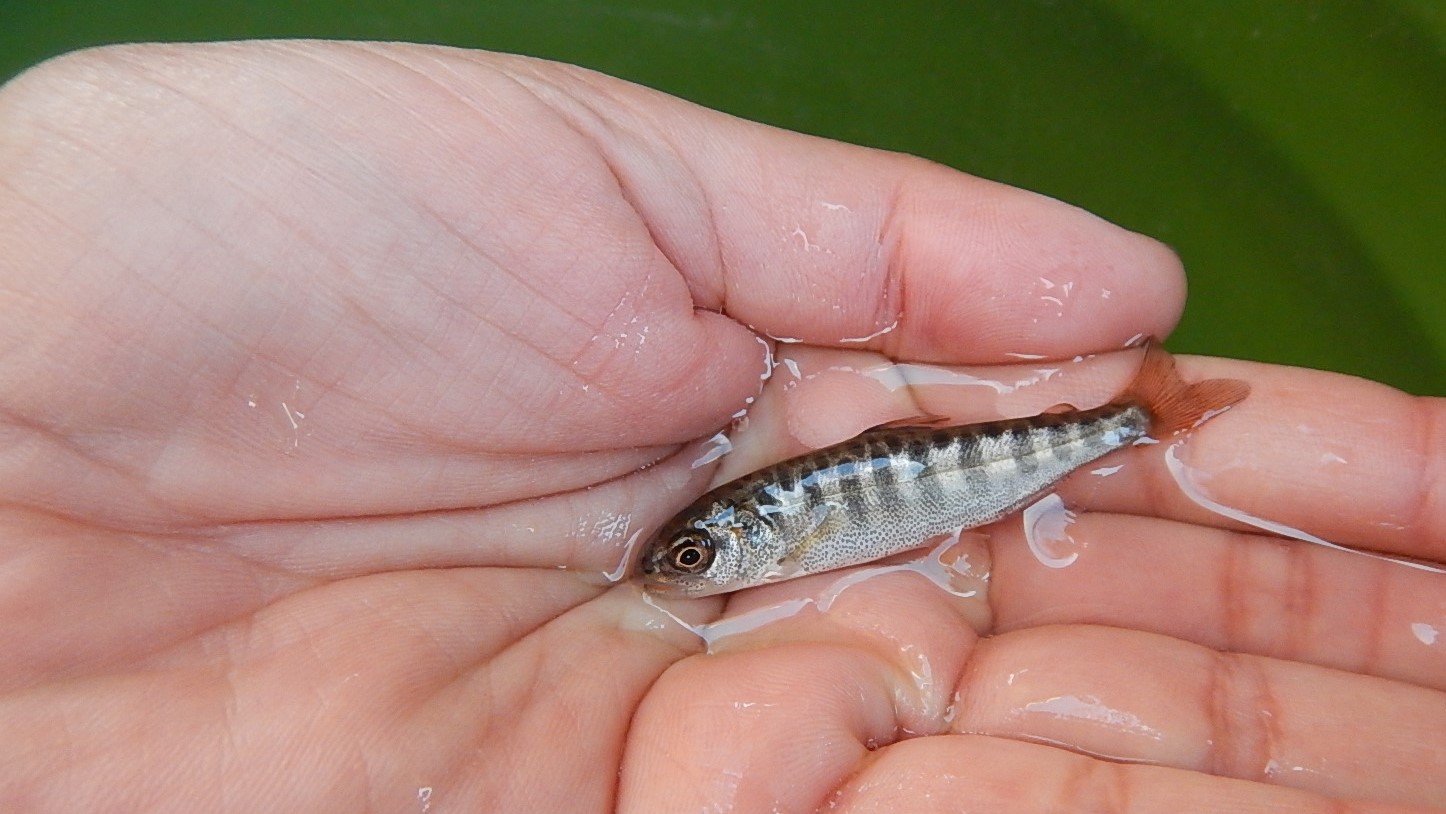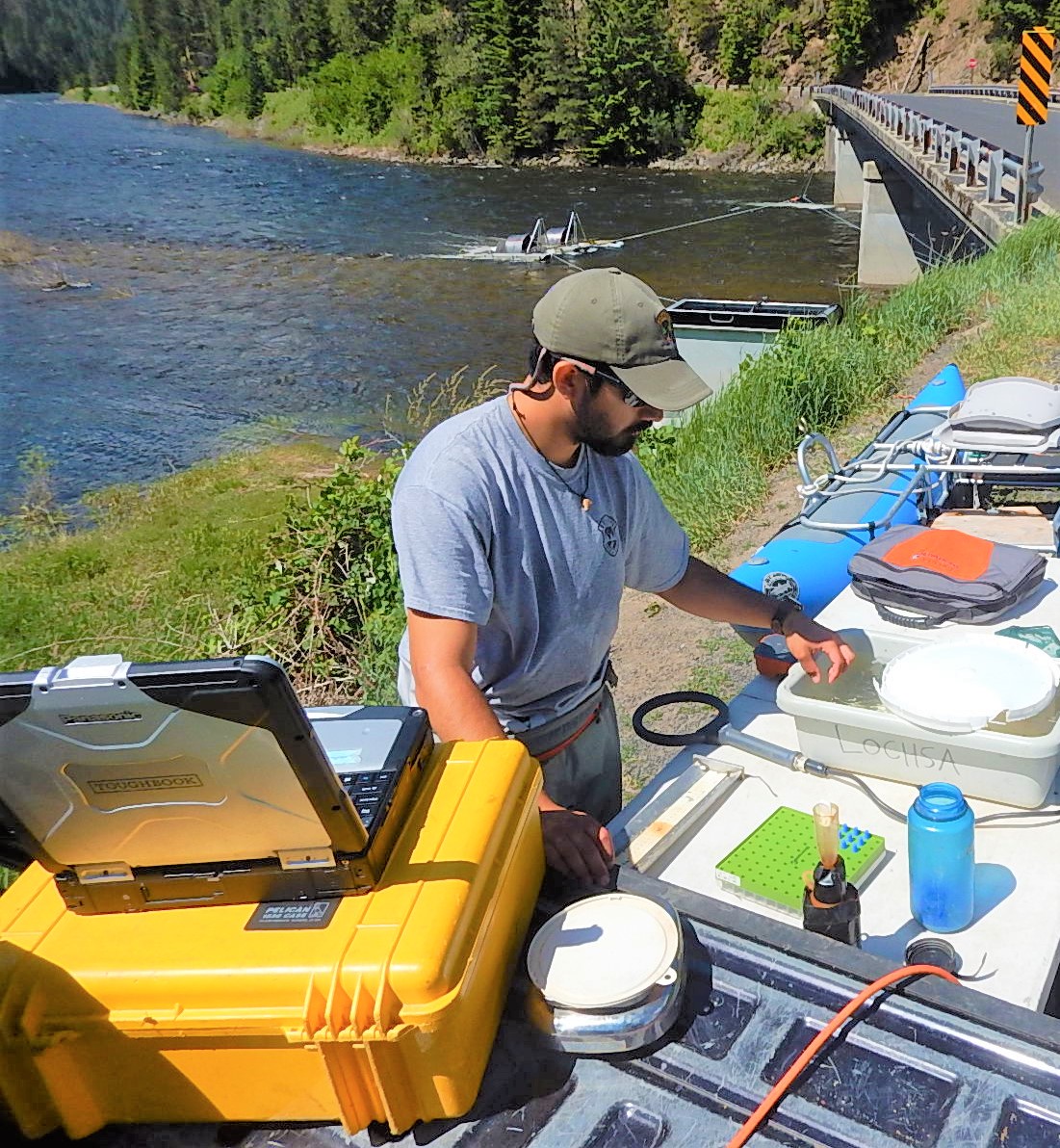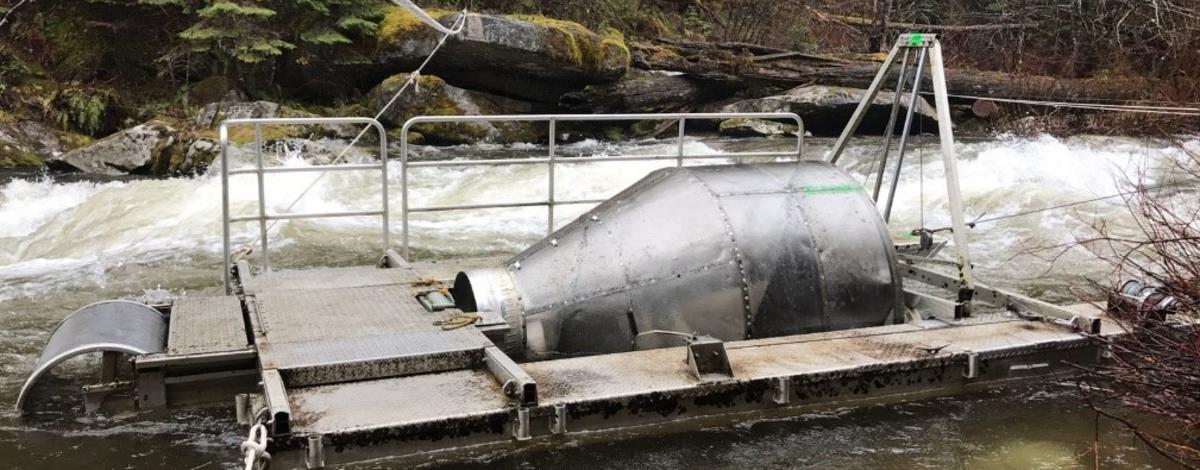Personnel working in the field for the Idaho Department of Fish and Game are frequently asked by the public about the purpose of the odd, floating, and spinning aluminum contraptions found in some Idaho streams. Some questions include:
“Does that thing power the lodge?”
“I have to ask, is that for mining gold?”
Unfortunate for us, they don’t generate power or help us find gold. These car-sized mechanisms sharply stand out against the natural riverine environment and don’t intuitively look like something that would be designed to sample our natural environment. But, while these do look quite odd siting in a river, they do work quite well at safely trapping juvenile fish.

Rotary screw traps (RST) were developed in Oregon and patented in 1990 with the intent to trap juvenile Chinook Salmon and steelhead as they emigrate from natal freshwater habitat and make their way to the Pacific Ocean. Idaho has been operating RSTs since 1992 to estimate the number of juvenile salmon and steelhead leaving certain drainages. The traps consist of three main components: a cone, a trap box, and pontoons. Inside of the cone, wings are situated in a spiral shape so that as stream currents push against them the cone will rotate on its horizontal axis, much like windmills. As downstream-moving fish enter the mouth of the rotating cone, they are guided to a submerged trap box where the fish are held until they are recovered by IDFG staff, sampled and then released. The pontoons provide floatation for the cone and trap box assembly.

Once folks learn that we are trapping juvenile salmonids, many wonder, “what are you going to do with those little guys after you trap them?”

Juvenile Chinook Salmon and steelhead collected at RSTs are weighed, measured for length, and often have fin tissue and scales samples collected from them. Scales are used to determine how old a fish is (A Scale Tale | Idaho Fish and Game) and fin tissue are used for genetic analysis. Additionally, Passive Integrated Transponders, or PIT tags, are implanted in some of the fish collected. After the fish have been sampled by the trap tender, they are released back into the stream to continue their journey downriver. All of the various data collected from the 15 RSTs that IDFG operates around the state allow biologists to monitor how many juvenile salmonids are produced and leaving from a particular system over time. This information allows biologist to track how populations are performing, as well as evaluate whether or not management and restoration actions are helping to improve conditions for these populations.

The next time you are out exploring and you come across one of these traps in Idaho, take a moment (from a safe distance) to watch them operate, and wish the next generation of salmon and steelhead a safe trip to the ocean.
For more information on Idaho's Wild Salmon and Steelhead click here.

